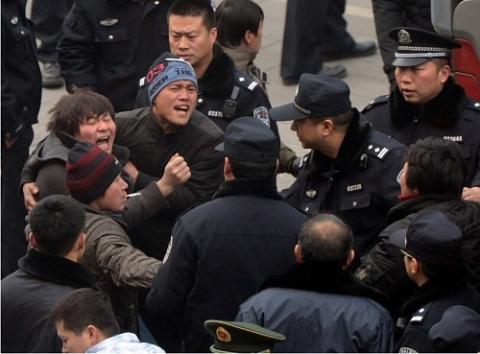The number of strikes and worker protests recorded on China Labour Bulletin’s strike map has more than doubled over the last year. Strikes have occurred in manufacturing, transport, retail, public services and the mining industry but perhaps the most notable increase in the last few months has been in the construction industry.
By China Labour Bulletin
This newsletter looks at why strikes and protests in China continue to escalate and examines the effectiveness or otherwise of the current system for resolving labour disputes. We also take an in depth look at two recent labour disputes in Guangdong where workers are trying to find a way out of the deadlock and put employee/employer relations on a more stable and productive footing.
The number of strikes and worker protests recorded on China Labour Bulletin’s Strike Map doubled in the last quarter, compared with the same period last year. CLB recorded a total of 372 incidents in the third quarter of 2014 compared with 185 incidents in the third quarter of 2013, an increase of 101 percent. (Photo: Construction worker protest in Beijing)
The dust-filled workshops of Zhongrong are replicated across China, leading to millions of cases of pneumoconiosis. A new survey by the charity Love Save Pneumoconiosis shows how the process of seeking compensation for migrant workers with pneumoconiosis is expensive, time consuming and brings little reward. (Photo: Nokia workers in Dongguan on strike in November 2013. This dispute is still on going)
A two-week strike by sanitation workers in Guangzhou last month showed what can be achieved through worker solidarity, a clearly defined strategy, and a determination to bring the boss to the negotiating table.
The Foshan Federation of Trade Unions agreed on 20 October to investigate the enterprise trade union at Tongxin Jewellery after a group of workers there lobbied for better trade union representation at the factory.
For more details go to:










